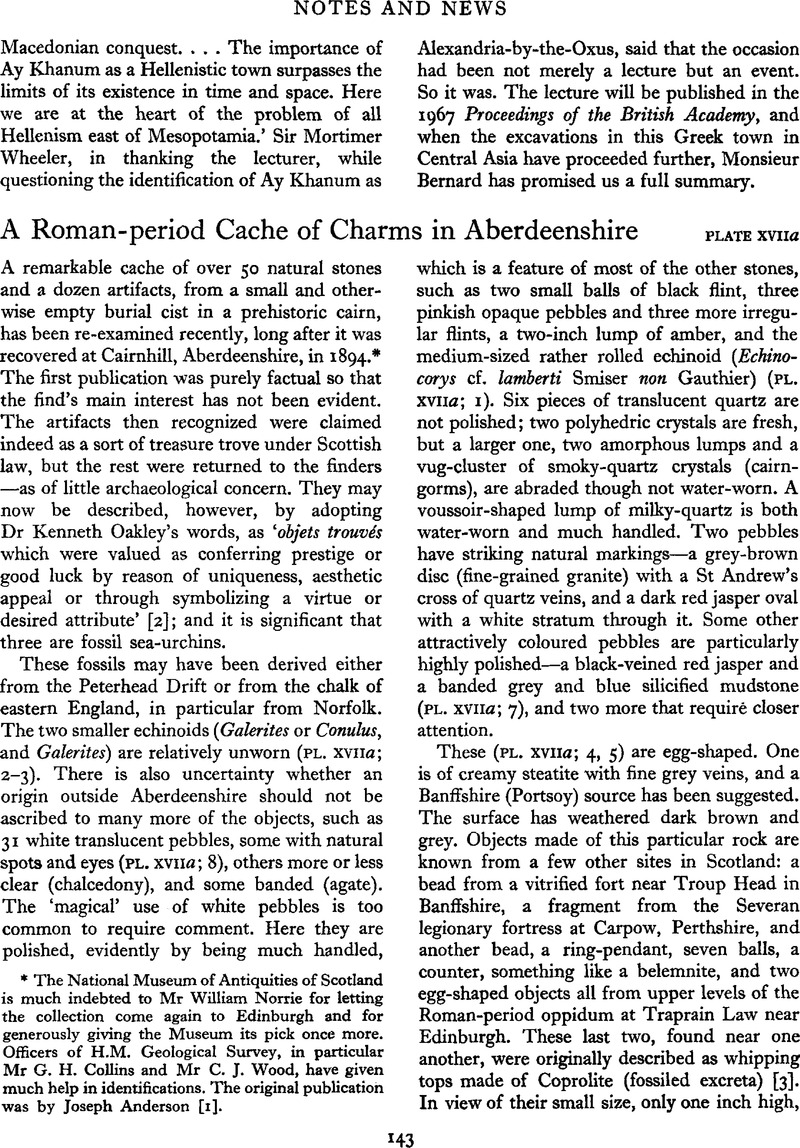Article contents
A Roman-period Cache of Charms in Aberdeenshire
Published online by Cambridge University Press: 02 January 2015
Abstract

- Type
- Notes and News
- Information
- Copyright
- Copyright © Antiquity Publications Ltd 1967
References
Notes
[1] Proc. Soc. Ant. Scot., 36, 1901–2, 675–82.Google Scholar
[2] ‘Folklore of Fossils’, antiquity, 1965, 10, 117.
[3] Proc. Soc. Ant. Scot., 56, 1921–2, 253, fig. 36.Google Scholar
[4] Proc. Soc. Ant. Scot., 88, 1954–6, 229.Google Scholar Previously thought to be Antrim bauxite; a further note on the material is in preparation.
[5] See [2], 119–20.
[6] Proc. Soc. Ant. Scot., 97, 1963–4, 207 n.Google Scholar; ÓRíordáin, S. P. and Daniel, G., New Grange (1964), 41–2Google Scholar; the late Roman jewellery and gold coins may originally have been associated. Stuart Piggott has discussed Roman coin finds from English barrows in West Kennet Long Barrow (1962), 55.Google Scholar
[7] Evans, E. E., Lyles Hill (1953), 19 and 57.Google Scholar I owe this reference to Miss A. S. Henshall. The use of cairns as smithies, real and legendary, despite or possibly because of their original sanctity, is a further field for speculation.
[8] ‘Scottish Charms and Amulets’, Proc. Soc. Ant. Scot., 27, 1892–3, 433–526.Google Scholar
[9] An Icelandic Viking, however, had in his grave 58 shining chalcedony pebbles as well as 26 glass beads and one of amber ( Islenzka Fornleifafelags Arbok, 1965, 48Google Scholar, fig. 26).
- 2
- Cited by




